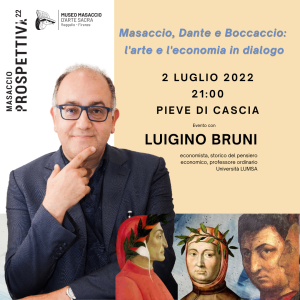ABBEY OF VALLOMBROSA
In 1008, Giovanni Gualberto, a young Florentine monk who had a stormy background, left the monastery of San Miniato in Florence together with a companion, to search for an appropriate place in which to meditate and to pray. His fiery character and his deep spirituality had already incited him to an open clash with the Florentine curia, which then smacked of simony.
After an encounter with St Romuald, the founder of the hermitage of Camaldoli, Gualberto went to a locality named Acquabona, where there was already a small hermitage. It was here that the first wooden cells for the monk’s new followers were built. In 1015, Gualberto was elected Superior by his companions, and thus, within the climate of the reformation of the Church, was born the new congregation of the Vallombrosian monks, which was destined to play a leading role in the ecclesiastical history of the coming centuries
The year of 1036 witnessed the beginning of the building of brick-masonry cells and of the oratory: around 1450, important enlargements were carried out, with the building of the new sacristy and premises for the novitiate. By the end of the XVth century the complex had already taken on its present-day appearance. In 1529, after the sacking by Emperor Charles V, the east tower was built for the purpose of defending the more valuable furnishings and books, while the wall surrounding the outside courtyard dates to the XVIIth century. The last intervention, at the end of the XVIIIth century, was the building of the large pool in front of the Abbey, which was used for the breeding of trout and also to produce ice.
Abolished during the Napoleonic era, the monastery returned to the monks’ ownership in 1817, thanks to Grand Duke Ferdinand. The forfeitures of the period under the House of Savoy caused the monks to be evicted once again, and the structure remained in the hands of the corps of forest rangers until 1949, when the State gave it back to the Vallombrosian Order.
The imposing building, which is dominated by the tower and the XIIIth-century bell tower, has the appearance of a castle. The façade of the XVIIth-century Abbey is the work of Gherardo Silvani, and the façade of the church also dates to the XVIIth century. However, it conserves its medieval layout in spite of the numerous interventions that were made to it during the baroque era.
Vallombrosa preserves a Della Robbia bas-relief in the hallway of the refectory, as well as a total of fifteen paintings by Ignazio Hugford in its interior. The wooden choir of the church was carved and inlaid by Francesco da Poggibonsi.
Scattered in the wood surrounding the building rise chapels and tabernacles of the XVIth and XVIIth centuries, which recall episodes from the life of Gualberto. Several pathways that meander through the forest by the side of these small monuments offer visitors the opportunity to meditate in silence.
For opening hours to the public and further information, you can visit the Abbey’s site: www.monaci.org.













